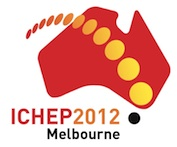Speaker
Dr
Silvestro Di Luise
(ETH-Zurich Institute for Particle Physics (CH))
Description
LAGUNA (Large Apparatus for Grand Unification and Neutrino Astrophysics)-LBNO(Long-Baseline Neutrino Oscillation)* is the proposal for a long baseline neutrino oscillation experiment with a new conventional neutrino beam aimed at a next generation deep-underground neutrino observatory composed of a double phase liquid Argon detector and a magnetized iron calorimeter located at the Pyhsalami mine, 2300 km from CERN.
The design of experimental apparatus is mainly driven by the successful phase of of R&D and prototyping on small scale setups:
i) higher signal efficiency along with high background rejection are attainable with the double phase LAr LEM TPC tracking-calorimeter technology thanks to the three-dimensional mm-scale spatial resolution and the excellent energy resolution capabilities.
ii) the detector will be complemented with a magnetized calorimeter for the muon detection in order to improve the reconstruction of events occurring in the LAr target.
The Phyasalmi mine, the deepest in Europe (4000 m.w.e.), represents a unique experimental location to observe new rare phenomena, both accelerator and non-accelerator based.
An unprecedented rich physics program can be pursued.
i) neutrino oscillations can be studied in detail fully exploiting, for the first time, the energy spectrum information of the oscillation probability (L/E method) in appearance and disappearance mode at long baseline.
An exposure of 2.25x10^20 protons on target (p.o.t.) from the CERN SPS at 400 GeV would allow for a definitive determination (> 5 sigma C.L.) of the neutrino mass hierarchy for any value of the CP violation phase delta_CP. The CP violation can be instead discovered at 3 sigma, through the L/E method, with a coverage of the 70% of the delta_CP parameter space, providing 1.5x10^21 p.o.t., which is achievable possibly in 10 years of exposure.
ii) Grand Unified Theories (GUT) can be investigated with searches for several nucleon decay signatures and with unprecedented sensitivities thanks to the very large detector mass and the extremely clean cosmological background.
iii) atmospheric neutrinos, as well as unknown astrophysical neutrinos (e.g. from D.M. annihilation) can be studied for the first time over a wide range of energies and final states
iv) the explosion of a galactic Supernova (SN) will be detected with large statistics, in neutrino and antineutrino modes and in all flavors allowing to constrain both the astrophysics of the SN and the neutrino flavor oscillations.
Main achievements of the R&D phase will be illustrated along with the future plan.
The status of the LAGUNA-LBNO project proposal will be discussed along with the possible realization schedules.
It will be highlighted the physics reach of a CERN-Pyhasalmi long baseline conventional beam coupled to one or more
experiment(s), based on an incremental approach, initially starting from the existing CERN SPS performance and far detector(s) with mass ranges in the 20 kton-scale, and gradually increasing the far detector masses and/or the SPS beam power.
* European Commission Framework Programme 7 Design Study LAGUNA (Project Number 212343).
Primary author
Dr
Silvestro Di Luise
(ETH-Zurich Institute for Particle Physics (CH))




